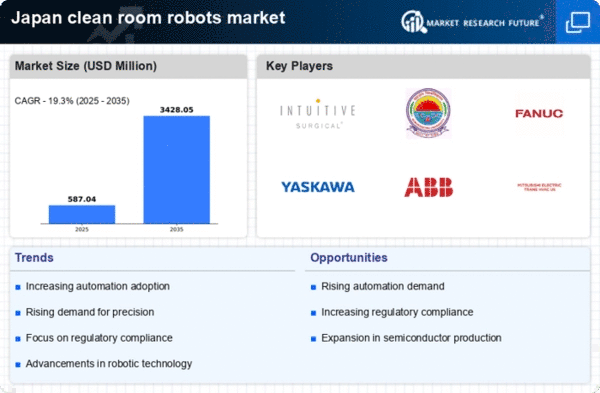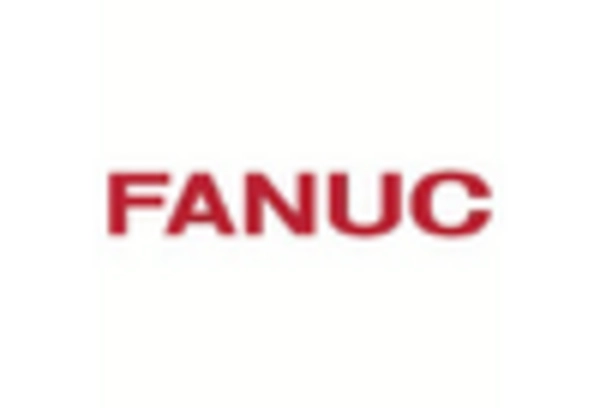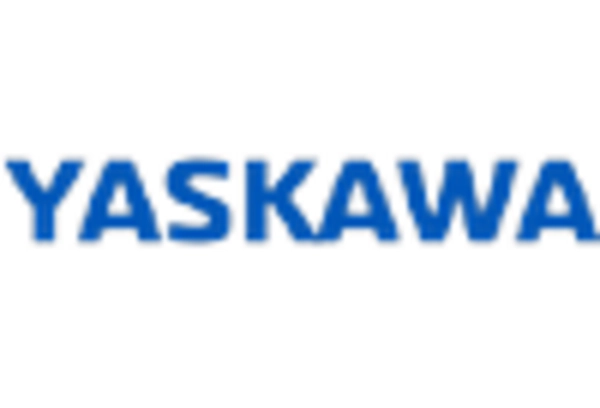Increased Investment in R&D
Investment in research and development (R&D) is a key driver for the clean room-robots market in Japan. Companies are allocating substantial resources to develop advanced robotic solutions tailored for cleanroom applications. This focus on R&D is essential for creating robots that can adapt to the unique challenges posed by cleanroom environments, such as maintaining sterility and minimizing human intervention. The Japanese government has also been supportive of innovation through various funding programs aimed at enhancing automation technologies. As a result, the clean room-robots market is likely to benefit from a steady influx of new technologies and solutions, fostering a competitive landscape that encourages growth and diversification.
Growing Need for Labor Efficiency
The clean room-robots market in Japan is being propelled by the growing need for labor efficiency in high-tech industries. As labor costs continue to rise, companies are increasingly turning to automation to optimize their operations. Robots can perform repetitive tasks with high precision and consistency, reducing the likelihood of human error and contamination. This shift towards automation is particularly evident in sectors such as semiconductor manufacturing and pharmaceuticals, where the demand for efficiency is critical. The clean room-robots market is projected to expand as organizations seek to enhance productivity while minimizing operational costs, potentially leading to a market valuation of $600 million by 2028.
Rising Demand for Cleanroom Standards
The clean room robots market in Japan is experiencing a surge in demand. This demand is driven by stringent cleanroom standards across various industries, including pharmaceuticals, biotechnology, and electronics. As companies strive to comply with regulations set by organizations such as the Japanese Ministry of Health, Labour and Welfare, the need for automated solutions becomes paramount. Cleanroom environments require meticulous control of particulate contamination, and robots are increasingly deployed to maintain these standards efficiently. The market is projected to grow at a CAGR of approximately 10% over the next five years, reflecting the increasing reliance on automation to meet these rigorous requirements. This trend indicates a robust future for the clean room-robots market, as businesses prioritize compliance and operational efficiency.
Technological Advancements in Robotics
Technological advancements are significantly influencing the clean room-robots market in Japan. Innovations in robotics, such as enhanced sensors, improved mobility, and sophisticated navigation systems, are enabling robots to operate more effectively in cleanroom environments. These advancements allow for greater precision in tasks such as material handling and surface disinfection, which are critical in maintaining cleanroom integrity. Furthermore, the integration of IoT technology facilitates real-time monitoring and data collection, enhancing operational efficiency. As a result, the clean room-robots market is expected to witness a growth trajectory, with an estimated market value reaching $500 million by 2027. This growth underscores the importance of continuous innovation in driving market expansion.
Focus on Sustainability and Environmental Compliance
Sustainability and environmental compliance are becoming increasingly important in the clean room-robots market in Japan. Companies are under pressure to adopt eco-friendly practices and reduce their carbon footprint. Robots designed for cleanroom applications are being developed with energy-efficient technologies and materials that comply with environmental regulations. This focus on sustainability not only helps companies meet regulatory requirements but also enhances their brand image in a market that values corporate responsibility. As a result, the clean room-robots market is likely to see a rise in demand for environmentally friendly robotic solutions, contributing to a more sustainable future for the industry.

















Leave a Comment